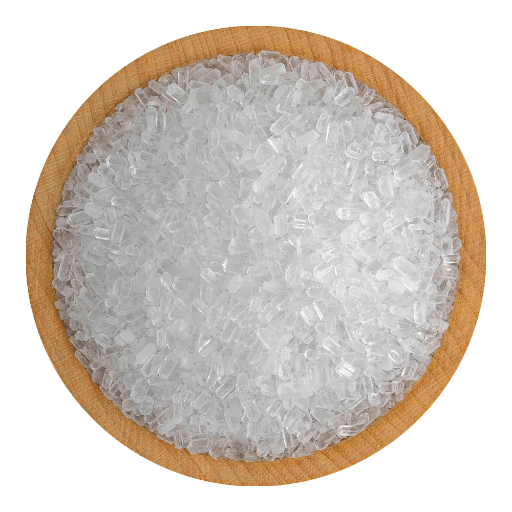Epsom salt, or magnesium sulfate, is used for various purposes in gardening and improves the growth and health of vegetable plants. This chemical substance contains two vital elements, sulfur, and magnesium, which are important in plant development. Using Epsom salt in a vegetable garden can improve the germination of seeds, increase nutrient uptake, make plants healthier due to stronger stalks, leaves, and stems, and enhance yields. In this article we shall look at what Epsom salt is capable of when it comes to optimizing the health and productivity of your vegetable garden; this will include going into detail on how it should be properly utilized for you to tap into its full potential.
What is Epsom Salt and How Does It Work on Plants?
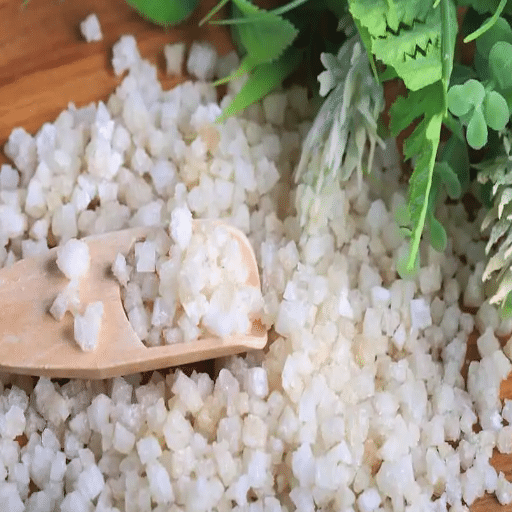
Through the provision of vital magnesium and sulfur, Epsom salt betters plants. Magnesium is a key component of chlorophyll, the molecule responsible for photosynthesis or solar power harvesting by plants. Moreover, magnesium is essential in enzyme activation, which controls many metabolic processes involving nucleic acid synthesis and energy metabolism. Sulfur is an important nutrient of plant growth because it contributes to amino acids, proteins, and vitamin synthesis. Thus, applying Epsom salts to soil or foliage can correct magnesium deficiencies, leading to improved photosynthesis, better greening, and overall enhanced healthiness of the whole plant.
How Does Epsom Salt Benefit Plants?
The benefit of Epsom salt on plants is derived from its dual presentation as both sulfur and magnesium. Magnesium forms part of chlorophyll, which takes part in photosynthesis and converts light into energy used by the plant. Thus, proper levels of magnesium ensure optimum plant growth and development. Practically speaking, a foliar spray rate of 1-2 tablespoons per gallon watered will significantly improve leaf greenness pigmentation and enhance plant vigor.
In contrast,Sulfur helps synthesize crucial amino acids plus vitamins while also being involved in building blocks for protein and enzymes that drive diverse metabolic activities within a cell. Usually, an effective soil application may range from 1-2 cups per 100 sq ft making it easy to absorb nutrients better fighting diseases. When applied properly, these micro-nutrients lead to healthier, stronger productive plants with increased resistance against environmental stressors.
Understanding Magnesium Sulfate in Epsom Salt
Magnesium sulfate (MgSO₄) is an inorganic salt consisting of oxygen molecules, sulfur molecules, and oxygen atoms linked together with each other using double bonds between Mg2+ ions surrounded by four O2− ions. Simply put, magnesium sulfate is also known as Epsom salt. Once it dissolves in water, it ionizes to magnesium (Mg²⁺) and sulfate ions (SO₄²⁻), which plants can readily assimilate. Some of the factors that affect the efficacy of magnesium sulfate application include concentration, method of application and frequency.
Magnesium (Mg²⁺), on the other hand, has an estimated solubility of about 710 grams per liter at 20°C for example. Therefore, when used as a foliar spray, its high solubility allows magnesium to be readily available to plants. Applying 1-2 tablespoons per gallon of water typically provides between 1500-3000 mg/L Mg²⁺ equivalent to an instant increase in chlorophyll production and plant vigor.
Sulfate (SO₄²⁻) constitutes part of the magnesium sulfate complex synthesizing essential amino acids and proteins. Actually, with its secondary role in plant feeding rates, such as proper soil application, it should range from 1-2 cupfuls per 100 sq ft, approximately 24,000- 48,000 milligrams Sulfur, which supports improved metabolic activities and cellular development.
Thus, following these parameters not only helps correct deficiencies but also promotes healthy,, robust plants, boosting productivity and resistance levels.
How to Use Epsom Salt in the Garden?
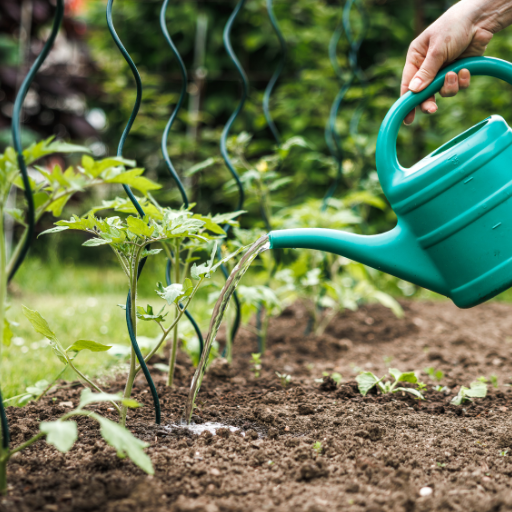
Epsom salt or magnesium sulphate can be used to boost plant health and productivity. To apply it to the soil, mix a gallon of water with 1-2 tablespoons of Epsom salt and use this solution around the plants’ base once a month. While foliar feeding, dissolve 1 tablespoon of Epsom salt in one gallon of water and spray this solution directly onto the leaves during the growing season, preferably when temperatures are lower to avoid burning. Besides that when you are planting you can put a tablespoonful of dry Epsom Salt into each hole before you put your plant in so as to give an initial boost of magnesium. These methods provide plants with needed magnesium and sulfur for optimal growth and resilience.
Ways on How to Use Epsom Salt
- Soil Drenching Technique: Mix a teaspoonful to two teaspoons full of Epsom salt with a gallon of water only, then pour that mixture on top of soil within one foot of plants’ bases every four weeks. This ensures absorption through roots, which strengthens cell development and nutrient uptake.
- Foliar Spray: A dissolved tablespoonful is mixed in a gallon of water. The leaf surfaces are targeted while spraying to speed up magnesium and sulphur absorption by crops through their stomata. Usually applied early morning or late evening hours to prevent sunburn; however, leaf burn may occur if it is not done well.
- Pre-Seeding Treatment: Add one spoon (dry)full into every planting holes before putting seedlings there. Adjust it all over the soil. Because this will ensure uniformity.This gives an easy supply for starting seeds therefore more vigor for young seedlings while developing roots earlier.
- Seed Soak: If you have seeds that should be planted, dip them overnight in water blended with Epsom salt at the rate of a tablespoon per gallon. This is known to boost the germination process and developmental rates of seeds due to readily available essential nutrients.
- Composting Aid: One cup of Epsom salt can be added to your compost heap for every cubic yard of compost material. This magnesium and sulfur helps speed up decomposition and enhance microbial activity, which will eventually lead to nutrient-rich manure that is highly beneficial to plants in gardens.
How Much Epsom Salt should be Used per Gallon of Water?
Normally, the amount of Epsom salt recommended per gallon varies depending on where it will be used. One tablespoon of Epsom salt diluted in a gallon of water for regular garden use should suffice. Regarding foliar spraying during the growing season, this concentration (1 tablespoon/gallon) is often used to prevent leaf burn and ensure absorption efficiency. In preparing soil prior planting, l suggest applying one tablespoonful dry epsom salt in each hole. These quantities are meant to ensure plants get just enough but safe magnesium and sulfur, thus promoting perfect healthiness and growth among them.
Can You Sprinkle Epsom Salt Directly on Plants?
In general, sprinkling Epsom salt directly on the plants is not advisable since they can cause nutritional imbalances or plant injury. While useful, if applied directly to leaves or soil, Epsom salts may burn leaves and hinder the absorption of other important nutrients such as calcium and potassium. It is better to dissolve Epsom salt in water and use it as a foliar spray or soil drench to distribute magnesium and sulfur evenly and control. However, moderation should be observed while applying this remedy so as not to damage plants
Which Vegetable Plants Benefit Most from Epsom Salt?
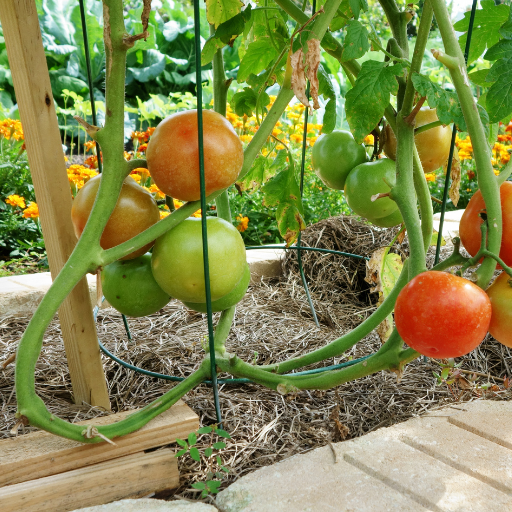
One of the main kinds of vegetables that gain a lot from Epsom salt is tomato plants. The magnesium sulphate in Epsom salt promotes photosynthesis and helps to absorb vital nutrients, thereby encouraging vigorous growth and better fruiting process. Moreover, pepper plants respond well after being given Epsom salt since additional magnesium can address blossom end rot, among others, and improve general plant status. Lastly, cucumber plants benefit from Epsom salt applications for greater consistency in flowering and fruiting, resulting in higher productivity. Therefore, it is recommended that those involved in gardening use Epsom salts on tomatoes, peppers, and cucumbers to achieve more desirable outcomes.
Using Epsom Salt for Tomato Plants
If used correctly, applying an adequate amount of Epsom salt to tomato plants greatly improves their development and yield. After a 30-day interval, dissolve 1 tablespoon of Epsom salt in one gallon of water for effective foliar spray application. This approach enables absorption through the leaf surface, thus enhancing chlorophyll generation during photosynthesis, making magnesium sulfate readily available.
Alternatively, it may be applied directly into the soil as a nutritional drench using 1 tablespoon per gallon mixed with plain water poured at the base of each pepper plant every second week. This method ensures enough magnesium and sulfur, which are absorbed quickly when needed, promoting robust growth with increased fruit production.
In addition, gardeners who like slow-release methods can mix Epsom salts into their soil during planting time. Just before planting your tomato seedlings, put 1-2 tablespoons of Epsom salt into the hole, which makes nutrition accessible immediately to the roots.
It is important to check these crops regularly for signs including yellowed parts between vein networks to assess whether more quantities should be added or not regarding their magnesium content. To ensure healthy and productive tomatoes managing application rates using accurate amounts o Epsom salts helps maintain nutrient balance and avoid problems like nutrient lockout.
Benefits of Epsom Salt for Pepper Plants
Epsom salt is used when growing pepper plants because they have a high amount of magnesium which is important in the chlorophyll molecule’s core structure, in the same manner as it is done for tomato plants. Similarly, you may dissolve 1 tbsp. Epsom salts are put into one gallon of water to make a foliar spray that can be applied to pepper plants once every month. This approach allows for speedy absorption of magnesium and sulfur in a form immediately available to the plant rather than being stored or converted to organic matter, as happens with soil application, thus promoting rapid growth and increased yield.
Another option involves using Epsom salt by soaking the soil surrounding each base using 1 tbsp per gallon mixed with plain water at a 2-week interval. Consequently, this fosters healthy root development through a consistent supply of vital nutrients necessary for overall growth, including plant health.
Besides, adding Epsom salts during planting time has long-term implications. In this case, insert between 1 and 2 tablespoons of Epsom salt per hole before seeding your young peppers so that they can quickly boost magnesium and sulfur, resulting in good establishment and early growth.
One should monitor soil pH levels since magnesium uptake is most efficient in soils with a pH range of 6.0 to 7.0. Furthermore, it is important to avoid over-fertilizing with potassium and maintain adequate soil moisture to prevent nutrient imbalances that could inhibit magnesium absorption. Periodical checks for symptoms of magnesium deficiency like interveinal chlorosis (yellowing between leaf veins) will indicate whether or not Epsom salt should be applied, as well as how often it should be done. By following these simple tips, gardeners can improve the strength and yield of their pepper plants.
Is Epsom Salt Good for Other Vegetable Plants?
Epsom salt is good for other vegetable plants besides pepper ones because it contains essential nutrients such as sulfur and magnesium, which are required by all vegetables to grow healthy and develop properly. An example would be tomatoes, which greatly benefit from increased amounts of Epsom salts. These help correct blossom-end rot, improve fruit setting, and increase yield. The widely known method is dissolving one tablespoonful of Epsom salt per foot tall plant in water and applying this mixture every two weeks.
Other vegetables, like cucumbers, require enough sunlight to produce carbohydrates through photosynthesis but also need sufficient magnesium from the soil. A standard practice could involve adding one tablespoon of Epsom salt to one gallon of water and using this solution as a foliar spray once a month.
Leafy greens such as spinach and lettuce – bright leaf color and strong foliage should be achieved by using Epsom salts; on top of that, though, one tablespoonful per square foot area planted with seeds before transplanting seedlings into the ground into the soil is necessary when considering how much amount should be added.
Technical parameters include monitoring soil pH values, including moisture level tests, while optimum up-take happens between six point zero, five point zero, and seven points. In water shortages, magnesium is absorbed at its maximum. Excess use of Epsom salt causes salinization, so it should be applied in moderation and soil testing should be done. In order to produce healthier vegetables and increase garden yield, the farmers can follow these guides.
One of the main kinds of vegetables that gain a lot from Epsom salt is tomato plants. The magnesium sulfate in Epsom salt promotes photosynthesis and helps absorb vital nutrients, encouraging vigorous growth and a better fruiting process. Moreover, pepper plants respond well after being given Epsom salt since additional magnesium can address blossom end rot, among others, and improve general plant status. Lastly, cucumber plants benefit from Epsom salt applications for greater consistency in flowering and fruiting, resulting in higher productivity. Therefore, it is recommended that those involved in gardening should use Epsom salts on tomatoes, peppers and cucumbers to achieve more desirable outcomes.
Using Epsom Salt for Tomato Plants
If used correctly, applying an adequate amount of Epsom salt to tomato plants greatly improves their development and yield. After a 30-day interval, dissolve 1 tablespoon of Epsom salt in one gallon of water for effective foliar spray application. This approach enables absorption through the leaf surface, thus enhancing chlorophyll generation during photosynthesis, making magnesium sulfate readily available.
Alternatively, it may be applied directly into the soil as a nutritional drench using 1 tablespoon per gallon mixed with plain water poured at the base of each pepper plant every second week. This method ensures enough magnesium and sulfur, which are absorbed quickly when needed, promoting robust growth with increased fruit production.
In addition, gardeners who like slow-release methods can mix Epsom salts into their soil during planting time. Just before planting your tomato seedlings, put 1-2 tablespoons of Epsom salt into the hole, which makes nutrition accessible immediately to the roots.
It is important to check these crops regularly for signs, including yellowed parts between vein networks, to assess whether more quantities should be added regarding their magnesium content. To ensure healthy and productive tomatoes, managing application rates using accurate amounts of Epsom salts helps maintain nutrient balance and avoid problems like nutrient lockout.
Benefits of Epsom Salt for Pepper Plants
Epsom salt is used when growing pepper plants because they have a high amount of magnesium which is important in the chlorophyll molecule’s core structure, in the same manner as it is done for tomato plants. Similarly, you may dissolve 1 tbsp. Epsom salts are put into one gallon of water to make a foliar spray that can be applied to pepper plants once every month. This approach allows for speedy absorption of magnesium and sulfur in a form that is immediately available to the plant rather than being stored or converted to organic matter, as happens with soil application, thus promoting rapid growth and increased yield.
Another option involves using Epsom salt. To do this, soak the soil surrounding each base with 1 tbsp per gallon of it, mixed with plain water at 2-week intervals. Consequently, this fosters healthy root development through a consistent supply of vital nutrients necessary for overall growth, including plant health.
Besides, adding Epsom salts during planting time has long-term implications. In this case, insert between 1 and 2 tablespoons of Epsom salt per hole before seeding your young peppers so that they can quickly boost magnesium and sulfur, resulting in good establishment and early growth.
One should monitor soil pH levels since magnesium uptake is most efficient in soils with a pH range of 6.0 to 7.0. Furthermore, it is important to avoid over-fertilizing with potassium and maintain adequate soil moisture to prevent nutrient imbalances that could inhibit magnesium absorption. Periodical checks for symptoms of magnesium deficiency like interveinal chlorosis (yellowing between leaf veins) will indicate whether or not Epsom salt should be applied, as well as how often it should be done. By following these simple tips, gardeners can improve the strength and yield of their pepper plants.
Is Epsom Salt Good for Other Vegetable Plants?
Epsom salt is good for other vegetable plants besides pepper ones because it contains essential nutrients such as sulfur and magnesium, which all vegetables require to grow healthy and develop properly. An example would be tomatoes, which greatly benefit from increased Epsom salts. These help correct blossom-end rot, improve fruit setting, and increase yield. The widely known method used is dissolving one tablespoonful of Epsom salt per foot tall plant in water and applying this mixture every two weeks.
Other vegetables, like cucumbers, require enough sunlight to produce carbohydrates through photosynthesis and sufficient magnesium from the soil. A standard practice could involve adding one tablespoon of Epsom salt to one gallon of water and using this solution as a foliar spray once a month.
Leafy greens such as spinach and lettuce – bright leaf color and strong foliage should be achieved by using Epsom salts; on top of that, though, one tablespoonful per square foot area planted with seeds before transplanting seedlings into the ground into the soil is necessary when considering how much amount should be added.
Technical parameters include monitoring soil pH values and moisture level tests. Optimal uptake happens between six points zero, five points zero, and seven points. In water shortages, magnesium is absorbed at its maximum. Excess use of Epsom salt causes salinization, so it should be applied in moderation and soil testing should be done. Farmers can follow these guides to produce healthier vegetables and increase garden yield.
How to Apply Epsom Salt for Tomatoes
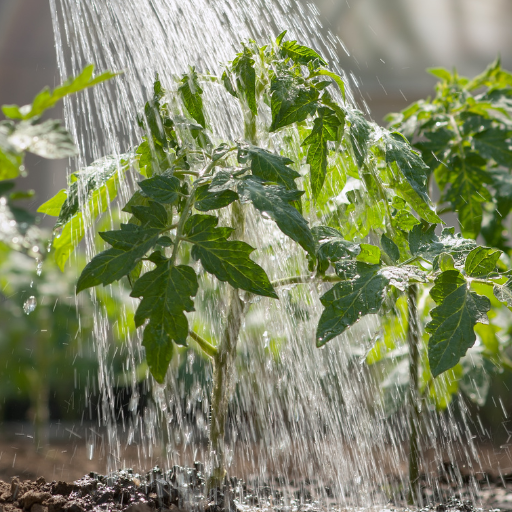
Epsom salt application for tomatoes: 1 tablespoon of Epsom Salt per foot of plant height mixed with water should be prepared. Bi-weekly administration of this solution is possible during the growing season. Additionally, to ensure effective nutrient absorption, spread Epsom salt (composed of one tablespoon) around the base of each plant and work it slightly into the soil. Also, soaking seeds in an Epsom salt solution (1 tablespoon per gallon of water) for about 24 hours during early growth or at planting will induce early germination and root formulation. To avoid nutrient lockout and facilitate magnesium uptake, keep watering consistent.
How much Epsom Salt per Plant?
The general recommendation is to apply one tablespoon of epsom salts in one gallon of water per foot high in plants. This should be done twice weekly throughout the growing period for optimum results. Moreover, sprinkle one teaspoonful of Epsom salt around each plant’s base while planting and ensure that it gets slightly into the soil to enhance nutrient assimilation. Soil test and proper watering practices are always critical when considering potential nutrient imbalances.
When to Apply Epsom Salt for Tomato Growth?
The timing at which Epsom salt is applied determines its effectiveness in promoting health tomato growth. It is good to apply some salta the time of planting new tomatoes.Mix some 1tablespoons of some set into the hole where you are transplanting your seedlings to boost them through magnesium, which helps develop the seedling stage. Also, you can spray a biweekly foliar spray on them using an Epson salt solution mixed with a tablespoonful full gallon f water. Watering flowers and fruits once every two weeks will provide enough magnesium for photosynthesis, leading to fruit production. Additionally, adding Epsom salt into the ground around your plants in the middle of the season will help keep magnesium levels and prevent nutrient lockout. Moreover, ensure that your soil pH is within the optimal range (6.0 to 7.0) for efficient nutrient uptake. These are not only recommended by the leading agricultural extension services but also by horticultural experts.
Avoiding Overuse of Epsom Salt
Though it contributes to plant growth, over-applicating Epsom salts can harm soil health and plant condition. An excessive use of Epsom salt leads to an imbalance in soil nutrients, especially calcium and potassium, which are vital in tomato growth, too. Furthermore, excesses of magnesium would prevent the uptake of other important elements, resulting in deficiencies rather than correcting them. To avoid this problem, following recommended rates and timings is necessary. For example, planting should be done using one tablespoon per plant. In comparison, foliar applications should be limited at biweekly intervals with a concentration of 1 tablespoon per gallon to prevent overaccumulation.
It is crucial to keep testing regularity of the soil to monitor nutrient levels and maintain that magnesium is within the normal range, usually between 50-100 ppm. The soil’s pH should also be watched closely and maintained at between 6.0 to 7.0 for effective absorption of nutrients by the plants. Following these recommendations by agricultural extension services and horticulturalists can help increase the benefits of using Epsom salt while reducing potential overuse cases.
Are There Any Risks of Using Epsom Salt on Plants?
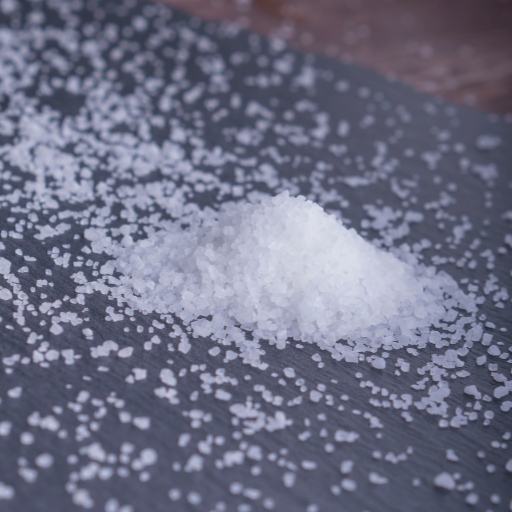
However, the use of Epsom salt on plants carries some risks, primarily associated with its high magnesium content. When Epsom salt is used excessively, it may cause nutrient imbalance in the soil, particularly affecting calcium and potassium necessary for healthy plant growth. It could also lead to the accumulation of excess magnesium that would subsequently reduce the absorption of other highly important nutrients like nitrogen and iron, resulting in their deficiency, respectively. Discretionary employment of Epsom salt can be harmful to soil whereby it alters both soil structure and microbial properties leading to soil toxicity. Therefore, adhering to recommended application rates as well as conducting regular soil testing to monitor nutrient status will help in mitigating these risks.
Understanding Plant Magnesium Deficiency
Whenever plants lack magnesium, they show distinct signs, including chlorosis, where leaves turn yellow but veins remain green. This condition affects photosynthesis negatively due to its role in chlorophyll production by reducing plant vigor. Curled leaves, necrosis, or premature leaf drop are most often seen first on older leaves because magnesium is mobile within plants.
To diagnose a magnesium deficiency, several technical parameters should be considered such as regular soil testing which is aimed at an optimum level of 50-100 ppm for soil pH between 6.0-7.0 for nutrient availability; corrective measures are:
1. foliar sprays using 1 tablespoon Epsom salt (Magnesium sulfate) per gallon water.
2. dolomitic lime which is used as a remedy against deficiencies especially in acidic soils since it supplies both calcium and magnesium at proper ratios
3. Knowing soil cation exchange capacity (CEC) ensures balanced nutrient uptake by determining the nutrient-holding capacity of a particular type.
Symptoms of Overusing Epsom Salt
Overuse of Epsom salt can result in various symptoms detrimental to plant health. The key symptom is a soil nutrient imbalance, particularly excessive magnesium blocking calcium uptake. For example, this nutritional imbalance leads to blossom end rot in fruit, characterized by dark sunken spots at the blossom end, which is common in tomatoes and peppers.
Additionally, leaf burn occurs when leaves get scorched edges due to the high salt content in the soil. Plant stress may cause stunted growth and poor overall performance in this condition. Still, excessive use of Epsom salt alters the structure of the soil, adversely affecting its Cation Exchange, which is necessary for better nutrient retention.
Technical parameters involved during application include maintaining soil magnesium levels within 50-100 ppm range and ensuring soil pH between 6.0 to 7.0 for balanced nutrient availability. Regular soil tests should be done so as to ensure that nutrient imbalances are avoided and soil health is maintained. It is important, therefore, to observe these guidelines, which are normally derived from reputable agronomy and horticulture information on how to minimize risks linked with Epsom salt overuse.
Does Epsom Salt Affect Your Garden?
Epsom salt can harm your vegetable garden when used wrongly. Overusing it might lead to soil extremely rich in magnesium, which displaces calcium absorption and may give rise to problems such as blossom end rot. Besides, elevated levels of salt content could result in foliage scorching and degradation of the soil texture causing poor plant performance and reduced crop yields. You must follow the recommended quantities and test the soil for nutrient composition every now and then.
Tips for Gardening with Epsom Salt
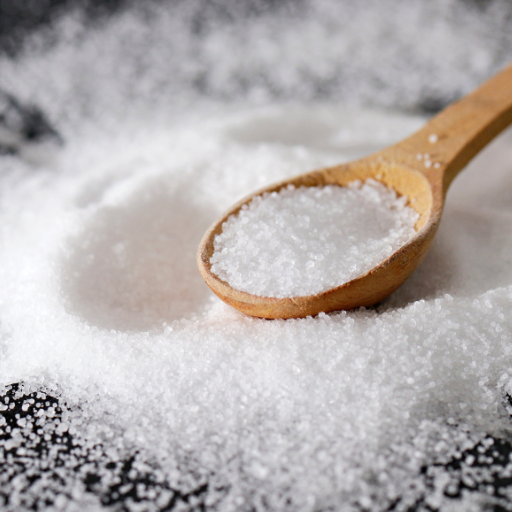
- Start with a Soil Test: Before applying Epsom salt, a soil test must be carried out to establish the level of magnesium in the soil. This will help avoid over-application and ensure that plants require adequate nutrient balance.
- Proper Dilution: Whenever you use Epsom Salt, always make sure to dilute it properly. It is common that one tablespoon of Epsom salt should be dissolved in a gallon of water. This solution can then be used to water the plants directly, which would facilitate the quick uptake of magnesium.
- Targeted Application: Concentrate on targeting plants like tomatoes, peppers, and roses that benefit from additional magnesium input through the application of Epsom salt. Apply moderately to avoid excess nutrient imbalance or potential degradation of soil structure.
- Regular Monitoring: Constantly check your plants and soil for any indication of magnesium deficiency, such as yellow leaves with green veins in between, and adjust the amount of Epsom salt applied accordingly. Regular soil testing facilitates tracking nutrients levels and maintaining soil health conditions.
- Avoid Overuse: Use Epsom salts sparingly because they should not be overused; an overdose results into excessive amounts of (magnesium) Mg, which may hinder the uptake of other essential elements like calcium; therefore, rates range at 1 tablespoon per foot height once a month during growing season
Common Mistakes to Avoid with Epsom Salt in the Garden
- Ignoring Soil pH: One common mistake when using Epsom salt in gardening is overlooking the pH level of the soil it’s being applied on. The pH balance can be affected by Epsom salts, thereby causing either very acidic or too alkaline soils to hinder the growth of crops.Plants thrive best when grown in balanced conditions necessitating periodical soil pH checks.
- Misidentifying Deficiency Symptoms: Gardeners sometimes mistake manifestations of other nutrient deficiencies like this for magnesium deficiency. As a result, Epsom salt may be used excessively or unnecessarily to aggravate the problem instead of solve it. Precise analysis can be done through close scrutiny or expert soil testing.
- Over-Application: Over-applying Epsom salt leads to more magnesium in the soil than is needed by plants. This excessiveness disrupts the availability of essential nutrients such as calcium and potassium to plants, hence interrupting plant health. To avoid negative effects, one should strictly follow recommendations, such as applying one tablespoon per foot-high plant monthly during the growing season.
Reference sources
- MasterClass
- Source: Epsom Salt in Garden: 4 Ways Plants Benefit From
- Summary: Epsom salt, high in magnesium, can help vegetable gardens produce larger and more flavorful fruits and vegetables.
- Trees.com
- Source: Tips For Using Epsom Salt In The Garden
- Summary: Epsom salts contain micronutrients and are particularly beneficial for roses, tomatoes, and peppers, helping these plants thrive.
- Sea Salt
- Source: Gardening with Epsom Salt For Plants
- Summary: Epsom salt is beneficial to vegetable gardens, especially for tomatoes and peppers, enhancing their growth and productivity.
Frequently Asked Questions (FAQs)
Q: What are the benefits of using epsom salt for plants?
A: Epsom salt can help plants grow bushier, produce more flowers, and increase nutrient uptake. It provides magnesium and sulfate, both essential nutrients that many plants require for healthy growth.
Q: How do I use epsom salt for plants?
A: There are several ways to use epsom salt for plants. You can sprinkle half a cup of epsom salt per 9 square feet of garden soil or mix two tablespoons of epsom salt in a gallon of water and use it to water your plants.
Q: Can I use epsom salt on tomato plants?
A: Yes, you can use epsom salt on tomato plants. Add a tablespoon of epsom salt to each transplant hole or dissolve it in water to give the plants an extra boost of magnesium.
Q: How often should I apply epsom salt to my plants?
A: Regular applications of epsom salt are recommended. You can add it once a month during the growing season to ensure your plants receive a steady supply of magnesium.
Q: Is it safe to use epsom salt for potted plants?
A: Yes, epsom salt is safe for potted plants. Use one tablespoon of epsom salt per gallon of water and apply it to the root zone to help plants thrive.
Q: Can epsom salt help with nutrient deficiencies in plants?
A: Yes, epsom salt can help with nutrient deficiencies, especially if plants require additional magnesium. Signs of magnesium deficiency include yellowing leaves and poor growth, which can be remedied by the addition of epsom salt.
Q: How does the addition of epsom salt affect garden soil?
A: Epsom salt improves the garden soil by increasing its magnesium content. This, in turn, helps in the healthy development of plants as magnesium is a key nutrient that many plants need.
Q: Can I use epsom salt for roses?
A: Absolutely. The National Gardening Association recommends using epsom salt for roses to enhance their growth. You can add a cup of epsom salt per rose bush early in the spring to ensure vibrant blooms.
Q: Do I need to dissolve epsom salt in water first before applying it to plants?
A: Although it’s not always necessary, dissolving epsom salt in water can make it easier for plants to absorb. Mix a cup of epsom salt in a gallon of water and use it to water first thing in the morning for best results.



